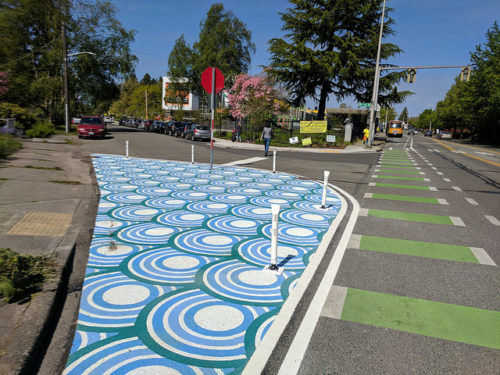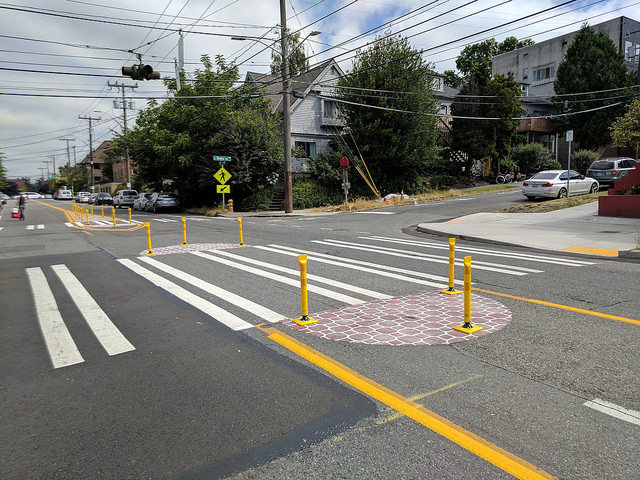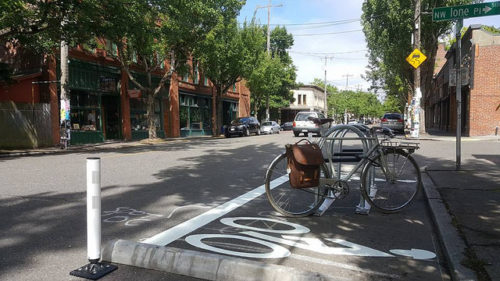Intersection Treatments
These treatments may be implemented at high priority locations identified in the Pedestrian Master Plan, where high incidences of pedestrian and motorist conflicts have been identified, or where pedestrian safety might otherwise be improved by such treatments. Adaptive crossing treatments may only be installed by SDOT.
Curb Bulbs

Curb bulbs are created by extending the sidewalk or curb line into the street at an intersection or mid-block crossing location in order to shorten the crossing distance for pedestrians and improve visibility at crossing locations. By physically and visually narrowing the street, curb bulbs also have a traffic calming effect.
Interim curb bulbs may be appropriate in locations where there is a safety need and a permanent solution is not feasible in the short term, and/or where there is a planned capital improvement within 5 years. At intersections with curb and gutter, an interim curb bulb can only be done with there are existing curb ramps. In some cases, curb bulbs may also be integrated with bioretention to manage stormwater runoff from the right-of-way.
Crossing Islands

Crossing islands are raised areas placed in the center of the street at intersections or mid-block pedestrian crossings to protect pedestrians and bicyclists from moving traffic while they wait for a safer opportunity to cross the other half of the roadway.
Adaptive crossing islands may be appropriate in locations where there is a safety need and a permanent solution is not feasible in the short term, or where there is a planned capital improvement within 5 years.
Bicycle Parking

Placing bike corrals near intersections allows them to function like curb extensions, providing visibility and protected space for crossing pedestrians as well as bicyclists entering and leaving the corral. These are tactical urbanism interventions that can be done for relatively low cost with pavement markings, flexible delineators or wheel stops. See Design Standards for more information about bicycle parking.

Adaptive Crossing Treatment Design Guidance
- Adaptive curb bulb surfaces should use epoxied gravel, paint, thermoplastic or other highly durable, contrasting and slip-resistant surface treatments to delineate pedestrian space.
- Physical separation can be achieved with flexible bollards, rubber curbing, parking stops, large planter boxes, concrete/stone barriers, or even art installations. Vertical elements should be maximum 36 inches in height.
- Signal timing adjustments such as a leading pedestrian interval (LPI), pedestrian crossing signage, high-visibility marked crosswalks, or other low-cost safety measures should be considered along with adaptive curb bulbs and crossings islands where not already present.
- Adaptive curb bulbs may only be installed where there is an existing curb ramp to access the bulb area for universal access.
- If there is an existing crosswalk, it must extend to the existing curb ramp; this may require a break in the painted bulb.
